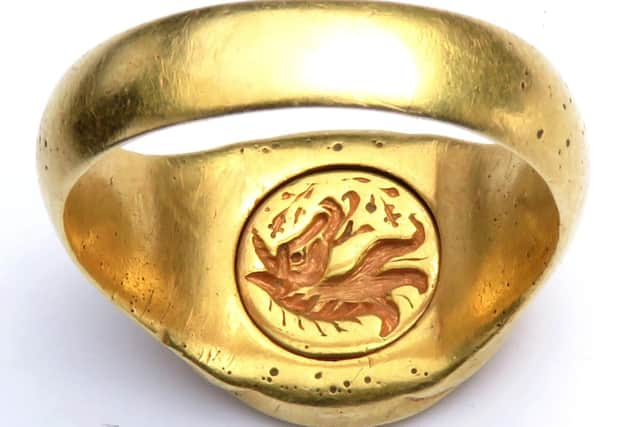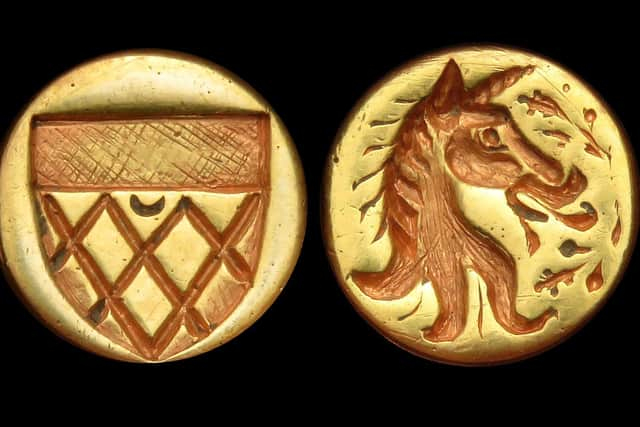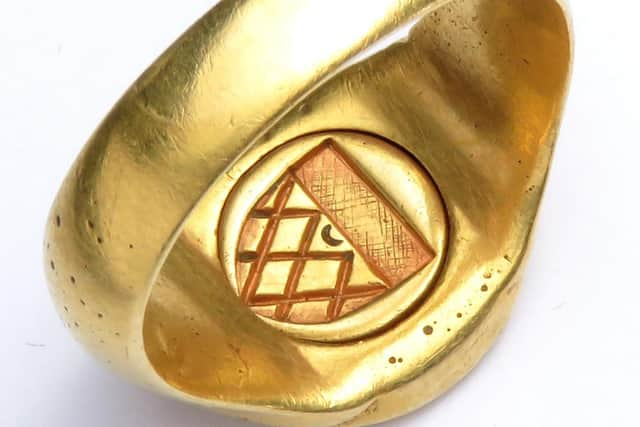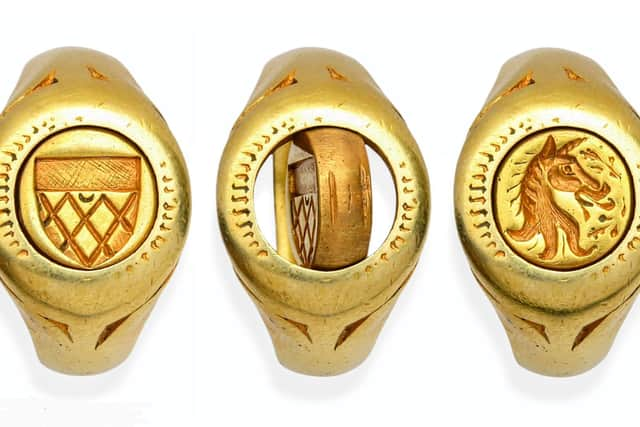Historic 400-year-old gold unicorn ring found buried near Milton Keynes sells for double its estimate
and live on Freeview channel 276
A buried treasure, lost for nearly 400 years, smashed its estimate at auction after being unearthed by a metal detectorist near Milton Keynes.
The impressive 17th-century gold signet ring was discovered on farmland at Thornton in 2018.
Advertisement
Advertisement
Engravings on the ring, which weighs more than 20g, indicate that it belonged to a member of a noble family.


Such was its historical significance and pedigree that it was auctioned by Hansons Auctioneers, in Derbyshire, last Friday with a guide price of £10,000-£12,000.
But intense bidding saw the ring smash all expectations when it was purchased by a UK bidder.
The hammer finally fell at £20,000 - double its estimate.
Charles Hanson, owner of Hansons Auctioneers, said: “It was an exceptional result for an exceptional find.


"Buried treasure lies beneath our feet, lost centuries ago.
Advertisement
Advertisement
"The ring’s historical importance made it irresistible to bidders.”
Experts at the auction house said the ring was expertly crafted so that the bezel swivels to reveal an engraved unicorn’s head - which is the crest of the Curwen family of Workington, in Cumbria.
The other side shows the family coat of arms charged with a crescent.


This indicates that the ring belonged to Thomas Curwen, second son of Sir Henry Curwen MP (1581-1623).
Advertisement
Advertisement
Thomas Curwen was born in 1602 and inherited the family estate following the death of his elder brother, Sir Patricius Curwen, 1st Baronet, in 1664.
The estate included the 15th-century Workington Hall, where Mary, Queen of Scots sought refuge in 1568 in the immediate aftermath of her defeat to Elizabeth I at the Battle of Langside.
The unicorn head crest is an echo of early Curwen family links to Galloway, Scotland.


Gateposts at Workington Hall are surmounted by carved stone unicorns’ heads.
Advertisement
Advertisement
Thomas, who never married, died on February 24 1672, and was buried at Workington.
Charles said: “The ring had travelled far from its ancestral home but we will never know how and why.
"It was discovered in 2018 by a metal detectorist on farmland at Thornton in Buckinghamshire.
“Finds like this are fascinating - not only is it a stunning item of jewellery, it’s an important family heirloom and a fascinating piece of Cumbria’s local history.”
Advertisement
Advertisement
Proceeds from the sale of the ring, which has been examined by experts at the British Museum and reported as treasure, will be shared with the owner of the land where the ring was found.
The unicorn ring was sold in Hansons’ Historica Coins and Antiquities auction on Friday, December 9, at Etwall Auction Centre, in Derbyshire.
To find out more, or to arrange a free historica/antiquities valuation, email [email protected]